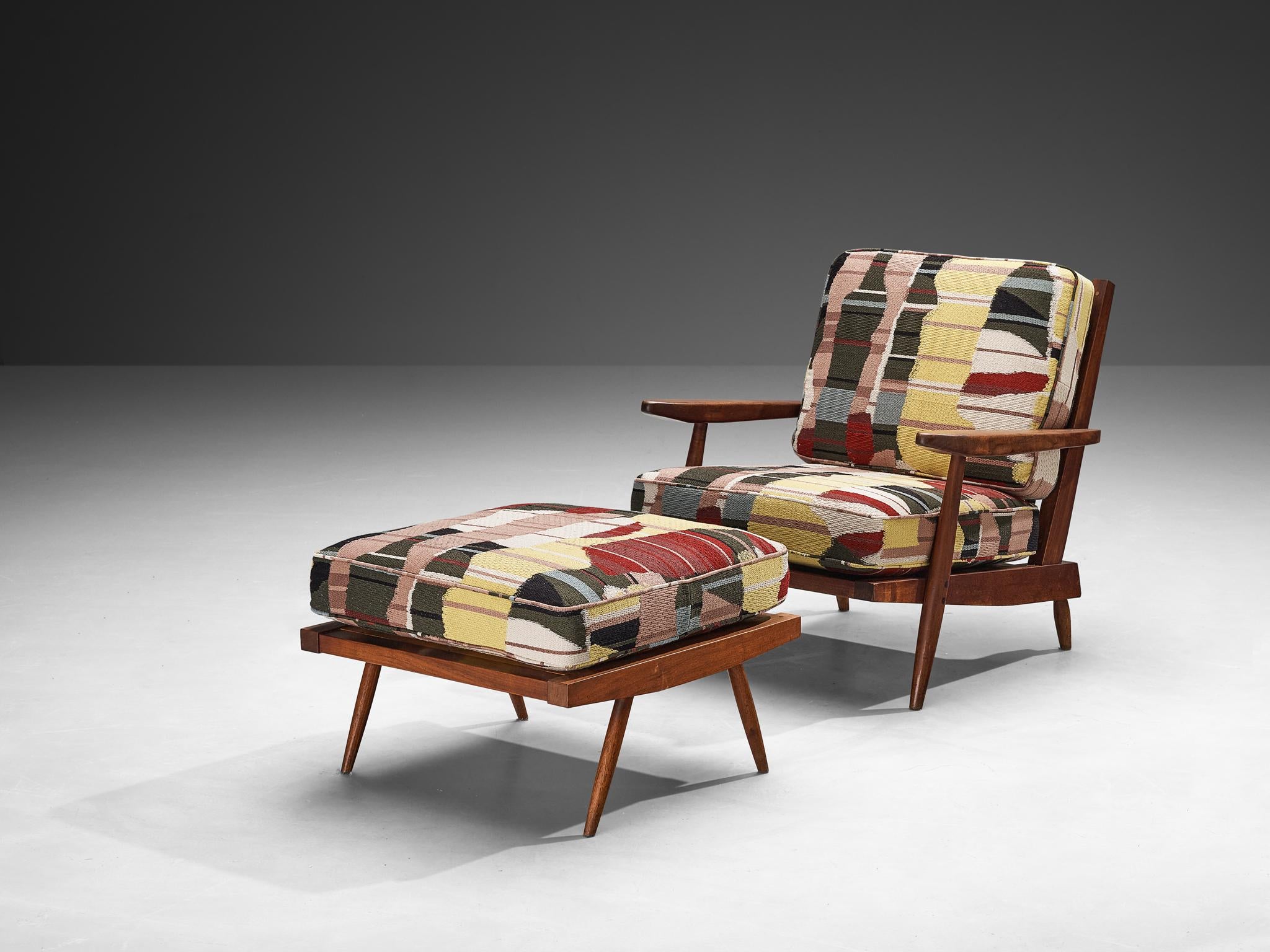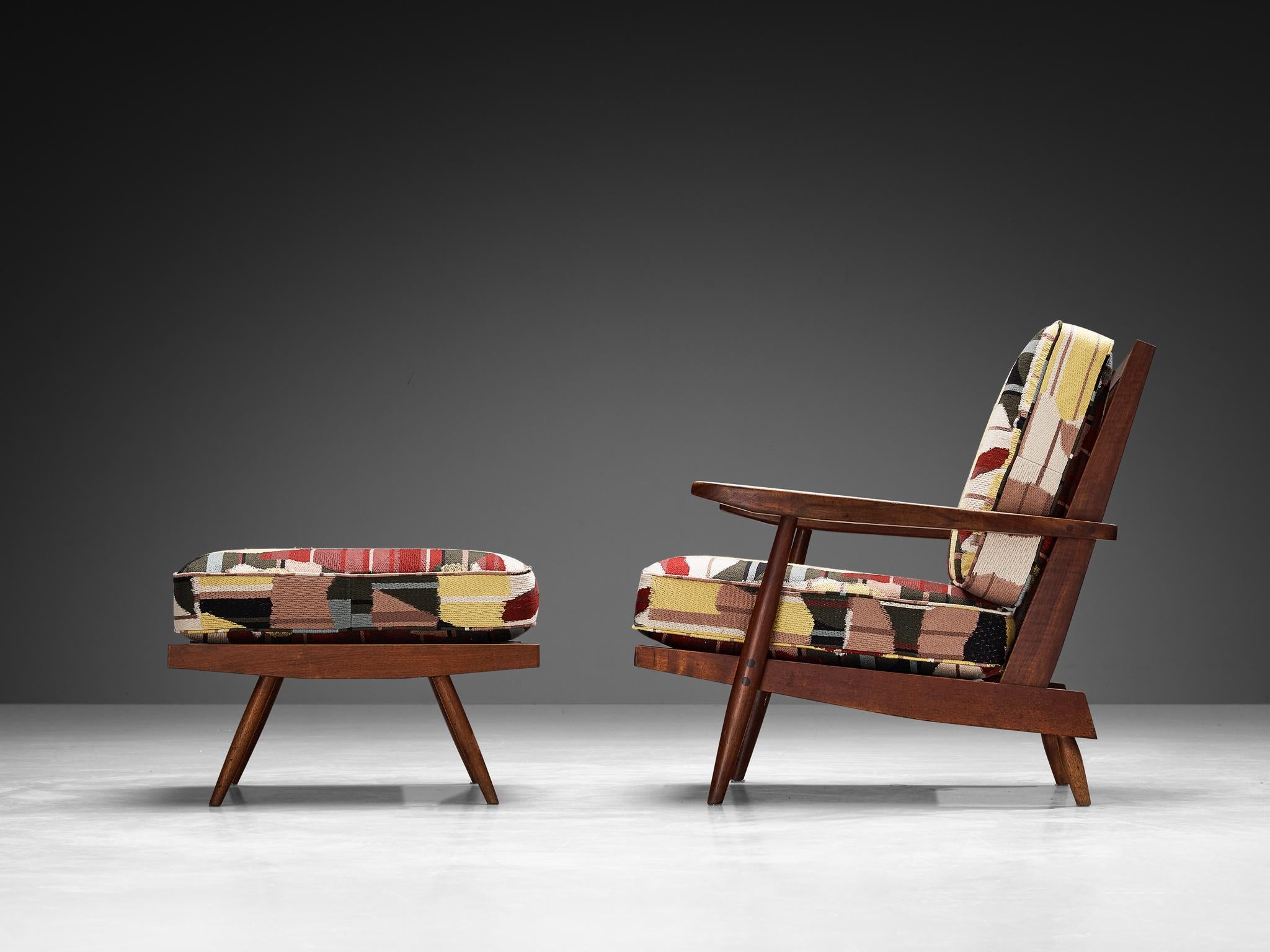












George Nakashima 'Cushion' Spindleback Lounge Chair and Ottoman in Walnut
George Nakashima for Nakashima Studio, 'Cushion' lounge chair and ottoman, American black walnut, reupholstered in Pierre Frey “Chupa” Vegetale, United States, 1962
This quintessential Cushion spindle back armchair is designed by George Nakashima. Executed in solid American black walnut, the wooden framework is characterized by clear, defined lines. The chair features spindles at the back, referring with this feature to the old Classic Windsor chairs. The feet of the chair as well as the ottoman are circular and tapered towards the end. The design of this chair is typical for Nakashima as it is minimalist and robust and stays close to the natural qualities of the wood and the tree of which these items are derived from. The cushions are reupholstered in a fabric of patches and lines in complementary colors named "Chupa" Vegetale by Pierre Frey.
George Nakashima (1905-1990) was a well-known woodworker, architect and furniture designer from Japanese descendants. He was born in Spokane, Washington and enrolled in the University of Washington program in architecture. After his graduation in 1931, he decided to live his life as a bohemian in France. Afterwards, he spent some time in North Africa and eventually settled in Japan for some time. There, he started working for Antonin Raymond, who was an American architect. While working for Raymond, Nakashima extensively toured Japan while trying to understand the Japanese architecture and design. Around 1940, Nakashima decided to leave Japan and returned to the US. However, like many others with a Japanese ancestry, he was interned during World War Two and sent to Camp Minidoka in Idaho. There, Nakashima met a master woodcarver who tutored him in Japanese crafting techniques. From him, he learned to master traditional Japanese hand tools and joinery techniques. From here onwards, he began to use woodworking with discipline and patience, striving towards perfection in his designs. In 1943, he was released from the camp and invited by Antonin Raymond to live in his farm in New Hope, Pennsylvania. During this period, New Hope formed the home port for many great designers such as Frank Lloyd Powell and Paul Evans. Nakashima was a very spiritual and philosophical designer. The basis of Nakashima's work was derived from his practice of integral yoga. Therefore, primary goal of Nakashima's work was to live in harmony with nature rather than to destroy it for their own use. Above all, Nakashima wanted to embody a message to all modern societies that we must constantly remember the eternal in all that we do. He often said of his own work that he gave trees a second life. His designs are known for their exquisite craftsmanship and are often 'signed' with dovetails and butterfly connections. With these ideas in mind, Nakashima created his own style based on Japanese designs and shop practices, combined with the American and International Modern Styles. Therefore, he became one of the best 20th century American Art furniture designers.
VAT within the EU: When buying or delivering an item within the EU, VAT usually applies and will be added.
Choose options













Product Details